European tragedy: peace is lost – the pursuit of peace is untrendy
When examining the causes and reasons behind the war in Ukraine, the clear-cut statements and well-defined reasoning can be found in the following excerpts from my earlier articles.
Not one inch eastward, December 6, 2021, my article
US Secretary of State James Baker’s famous “not one inch eastward” assurance about NATO expansion in his meeting with Soviet leader Mikhail Gorbachev on February 9, 1990, was part of a series of assurances about Soviet security given by Western leaders to Gorbachev and other Soviet officials (including Boris Yeltsin) throughout the process of German unification in 1990 and on into 1991. Gorbachev and others were led to believe that wouldn’t happen.” The key phrase, buttressed by the documents, is “led to believe.” These documents, by the American National Security Archive at George Washington University, provide evidence supporting the Soviet/Russian position.
In 2008, former US Ambassador to Russia William Burns and the current CIA director warned that any effort by NATO to bring Ukraine into its fold would be viewed by Russia as a threat to its national security and, if pursued, would provoke a Russian military intervention. That memo by Burns provides much-needed context to the December 17, 2021 initiatives by Russia to create a new European security framework that would keep Ukraine out of NATO.
“Walking the path of death and destruction”, September 13, 2023, my article
Secretary General Jens Stoltenberg publicly acknowledged Russian invasion is due to NATO eastward expansion and other NATO affairs. On September 7th, NATO’s Secretary General, Jens Stoltenberg, acknowledged that the war in Ukraine did not start on 24 February 2022, when Russia invaded Ukraine, like Western media say but much earlier, in 2014, and that Russia’s invasion in 2022 resulted from NATO’s efforts to bring Ukraine into NATO and to bring NATO’s military forces closer to Russia’s borders:“He [Putin] went to war to prevent NATO close to his borders.”
Opening remarks by NATO Secretary General Jens Stoltenberg
at the joint meeting of the European Parliament’s Committee on Foreign Affairs (AFET) and the Subcommittee on Security and Defence (SEDE) followed by an exchange of views with Members of the European Parliament. September 7, 2023.
NATO Chief: NATO Expansion Caused Russian Invasion
Consortium News, September 9, 2023. During a speech at the EU Parliament’s foreign affairs committee on Thursday, NATO Secretary General Jens Stoltenberg clearly and repeatedly acknowledged that Putin made the decision to invade Ukraine because of fears of NATO expansionism.
NATO Secretary General Jens Stoltenberg has publicly admitted several times during 2023 that the reason for the war in Ukraine is NATO’s eastern expansion.
Collective West (the US, EU, NATO, G7) has claimed that Russia’s invasion of Ukraine was an act of “unprovoked aggression” but the reality is far different: Russia had been duped into believing there was a diplomatic solution (Minsk 2) to the violence that had broken out in the Donbass region.
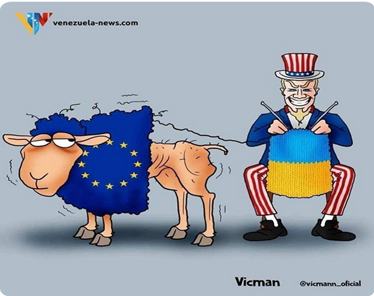
Peace process in Ukraine crisis
Public opinion is clearly permeated by the war in Europe, war hawks are prominently displayed today throughout Europe. This belligerent transformation process over the whole Europe has taken place quite quickly in 2022 but we do not focus on those causes in this article, only consider those peace efforts or processes, which can be defined both before the outburst of Ukraine war and during the war.
Nowadays the only countries in Europe, which talk even some words about peace in Ukraine war, are two “sideliners” Hungary and Slovakia.
I have examined this topic in many articles on my website, here below some examples of articles:
November 22, 2023, August 1, 2023, March 26, 2023, February 7, 2023, January 27, 2023.
Minsk Accords of 2015 (Minsk II)
After the dissolution of the Soviet Union in 1991, Ukraine became an independent country. In the years 2013-2014, the Ukraine was at a real crossroads. The West was calling Ukraine to align itself with European and American interests but its President, democratically-elected Ukrainian President Viktor Yanukovych, was instead leaning towards aligning the country’s interests with Russia. President Yanukovych was overthrown in a violent coup on February 21, 2014, a so-called color revolution took place.
Minsk agreement was one that aimed to resolve the long-simmering conflict in eastern Ukraine. The conflict was between pro-Russian separatists mostly from the Donetsk and Luhansk regions, who were more ethnically Russians. The Organization for Security and Cooperation in Europe (OSCE) was in charge of monitoring the implementation of the ceasefire agreement but the agreement ultimately failed.
In late November 2022, in an interview of Der Spiegel, Angela Merkel, former German Chancellor, shed light on the duplicitous game played by Germany, France, Ukraine and the United States in the lead-up to the Russian invasion of Ukraine in February 2022. She publicly admitted that Minsk Accords were only for buy more time to develop Ukraine’s armed forces to meet Russian forces at equal base. More information about this process: “Merkel Lies”: How Europe Was Deceived About the Minsk Agreements , article by Lucas Leiroz, December 27, 2023 in Strategic Culture online
Merkel’s comments parallel those by former Ukrainian President Petro Poroshenko in June 2022. Poroshenko made it clear that Ukraine had not come to the negotiating table on the Minsk Accords in good faith. Moreover, the US (Victoria Nuland) told him not to follow up on the agreement. When Zelensky, who was elected by a large majority on the promise to fulfill Minsk II, came to power, he even made attempts to do that. But he soon found out that his own life was in serious danger, if he continued to try. There was also US pressure, which did not want Minsk fulfilled.
Collective West (the US, EU, NATO, G7) has claimed that Russia’s invasion of Ukraine was an act of “unprovoked aggression” but the reality is far different: Russia had been duped into believing there was a diplomatic solution to the violence that had broken out in the Donbass region. Instead, Ukraine and its Western partners were simply buying time until NATO could build a Ukrainian military capable of capturing the Donbass in its entirety, as well as evicting Russia from Crimea. In other words, this means that Collective West saw, already 8 years ago, the war the only option to solve Ukraine problem.
Putin acknowledged, in January 2023, that it was a mistake to agree to the Minsk Accords and that the Donbass problem should have been resolved by force of arms already at that time. Now it is absolutely clear that there never will be a peaceful settlement of the Russian-Ukrainian conflict. War was the solution sought by the Collective West then and war is the solution sought by Russia today. This will not end well for either Germany, Ukraine, France or any of those who pretended supporting diplomatic compromise but in reality, prepared Ukraine for warfare.
Peace talks around yearend 2021/2022
Important events and meeting carousel around yearend 2021 / 2022 was impressive:
Biden – Putin video summit, December 7, 2021
Putin – Xi video summit, December 15, 2021
Russia’s two sets of draft agreements, December 17, 2021
These proposals represent Russia’s factual requirements for renewed European security arrangements. Among the proposals was a demand for written guarantees that the military bloc would not expand closer to Russia’s borders and that Ukraine’s long-held membership aspirations would not be granted. The package of measures was quickly dismissed by the NATO’s secretary general, Jens Stoltenberg, who said that NATO “has never promised not to expand,” and argued that no third nation should have a veto over which countries are granted membership.
On December 15, 2021, Russia sent the final proposals to the US
Treaty between The United States of America and the Russian Federation on security guarantees
and to the NATO
Two days later (Dec.17) these documents were published and the Russian Foreign Office invited the West to agree to and sign up or at least begin discussing about the proposal. Not only was the paper not signed, not even properly acknowledged. It was arrogantly ignored by the Western powers in a short process of talks.
Putin – Biden phone talk, December 30, 2021
Negotiation format in January 2022: Russia – the US – NATO – OSCE (EU)
The schedule of exchanges will be conducted in the following formats:
- NATO top diplomats hold an extraordinary virtual meeting on January 7 to address Russia’s requirements relating to European security issues
- a Russia-US meeting to be held on January 10 in Geneva,
- followed by another meeting in Brussels between Russia and NATO on January 12, and
- a final encounter on January 13 at the level of the Organization for Security and Cooperation in Europe (OSCE)
A diplomatic marathon of the week 2 that saw Russia hold talks with the US and NATO on European security guarantees, ended seemingly without concrete results. It is unclear yet, whether Russia will be ready to resume substantial talks with the West, as the US and NATO have refused point-blank to discuss the two issues that are of crucial importance to Moscow:
- Russia wants the bloc to stop expanding to the east and to withdraw troops and remove infrastructure from the countries that joined the alliance post 1997.
- the same goes for the question of Ukraine’s (and Georgia’s) hopes to join NATO, which Moscow vehemently opposes
NATO and the US should have listened to Russia’s proposals in December 2021 to avoid all the sufferings faced by Ukraine. Based on the official text, it is very clear, what Russia wanted from the US. Russia insisted on formalizing conditions that were agreed upon by President Gorbachev and his Western counterparts in the 80’s and 90’s before and after the Cold War.
Really shocking is that all these conditions and argumentations were stated in early 2022 and there was a plenty of time to settle. Russia did not want to seize the territories or the resources of Ukraine or other countries. What Russia proposed was and is to solve the issue of European security setups.
Peace talks March-April 2022
Just about a month after the Russian invasion, in April 2022, the Russians seemed prepared to accept an outcome, which limited Russian territorial gains to the Donbass and Crimea and an agreement by Ukraine not to join NATO. Indeed, Russia and Ukraine were on the cusp of formalizing an agreement along these lines in negotiations scheduled to take place in Istanbul in early April 2022.
Then British Prime Minister Boris Johnson made a surprise visit in Kiev and met Ukrainian President Zelensky. Johnson’s intervention was motivated by an assessment on the part of NATO that the initial Russian military failures were indicative of Russian weakness. “BoJo” broke a ready-made peace deal proposal forcing Ukraine to resume warfare promising sufficient military and financial aid to Ukraine from the West.
The United States/Biden administration together with the UK/PM Boris Johnson played the primary role in sabotaging the March 29, 2022 tentative peace agreement between Russia and Ukraine.
The United States persuaded its NATO allies that pursuing the war against Russia, using Ukraine as a proxy, offered a legitimate opportunity to destroy Russia. Instead of helping end the war between Russia and Ukraine, the United States and its NATO vassals condemned hundreds of thousands of Ukrainian soldiers to death in a war with Russia they could not win.
This fact of events is fully confirmed in the recently published article “HOW THE CHANCE WAS LOST FOR A PEACE SETTLEMENT OF THE UKRAINE WAR — AND THE WEST WANTED TO CONTINUE THE WAR INSTEAD” by Professor Hajo Funke and General (ret.) Harald Kujat (Berlin, October 2023). A commentary article (to the above mentioned) is “HOW THE United States and Its NATO Allies Sabotaged Peace Between Russia and Ukraine” by Larry Johnson, November 14, 2023.
An agreement with Russia at that time would have kept Ukraine mostly as one state with only minor losses in the Donbas. But the decision to continue the destructive war also ended all chances for Ukraine to keep its integrity.
China’s proposals on Ukrainian crisis settlement February 24, 2023
Speaking at the Munich Security Conference on February 18, Wang Yi said that Chinese authorities would prepare a document on China’s position on resolving the Ukrainian crisis by the anniversary of the start of Russia’s special military operation in Ukraine. He noted that the abovementioned document would be based on the proposals of Chinese President Xi Jinping. China published on Friday its position on the political settlement of the Ukrainian crisis. The text of the document is posted on the website of the Chinese Foreign Ministry and includes 12 points.
China’s Position on the Political Settlement of the Ukraine Crisis, 2023-02-24
1. Respecting the sovereignty of all countries. 2. Abandoning the Cold War mentality. 3. Ceasing hostilities. 4. Resuming peace talks. 5. Resolving the humanitarian crisis. 6. Protecting civilians and prisoners of war (POWs). 7. Keeping nuclear power plants safe. 8. Reducing strategic risks. 9. Facilitating grain exports. 10. Stopping unilateral sanctions. 11. Keeping industrial and supply chains stable. 12. Promoting post-conflict reconstruction.
Kissinger’s peace proposal in Davos Summit, May 2022
May 23, 2022, former US secretary of state Henry Kissinger, 98, told the World Economic Forum held in Davos, Switzerland that Ukraine must begin negotiations “before it creates upheavals and tensions that will not be easily overcome”. He said Ukraine should accept giving up part of its territory to reach a peace deal with Russia and end the now three-month-long war immediately. Failing to restart negotiations with Russia and continuing to antagonize Moscow could have disastrous consequences for Europe’s stability in the long term.
Kissinger also said that the West should stop trying to inflict a crushing defeat on Russia and Ukraine should give up territory. He said that Ukraine should give Russia territory within the next two months and accept terms that fail to meet their current war aims. Kissinger explained that Russia has been an “essential part of Europe” for over four centuries, noting that European leaders must “not lose sight of the longer-term relationship” or otherwise risk putting Russia in a permanent alliance with China.
Kissinger did not criticize the way the war in Ukraine is being conducted. What Kissinger criticized was the policy itself, that’s what triggered the firestorm. The US policy regarding Ukraine that President Biden is currently pursuing, is hurting both US interests and US allies’ interests. The US basic strategy of this case is to “weaken” and “isolate” Russia by severing Russia’s economic ties with Europe and spurring them into a long and costly quagmire in Ukraine. That sounds a reasonable plan but according to Kissinger is totally wrong. Why?
Because US National Security Strategy identifies China as America’s number one rival and therefore, any policy that makes China stronger, runs counter to US strategic interests and the US proxy-war in Ukraine is making China stronger.
The reason is that it forces Russia to strengthen relations with China and this makes China a lot stronger. Russia’s pivot to Asia is reaching an irreversible turning point in this summer. The closer relations between the biggest economic and manufacturing power China with largest population base and geographically largest nation Russia with richest natural resources will form the most powerful player on the international scene.
His key arguments are: The US policy is wrong. The US policy must be changed immediately or the damage to the US and its allies will be severe and permanent. (“Negotiations need to begin in the next two months”)
Peace talks … or not – rumors in 2023
There have been some peace talks between the US and Russia in last couple of months. William Burns, the CIA’s director was to meet his opposite Russian intelligence chief Sergei Naryshkin in Ankara in November 2022. This back-channel meeting was to explore compromises before America finds itself to sacrifice the Ukrainian population in a proxy war.
On January 30 Secretary of State Anthony Blinken was in Egypt and met with its Foreign Minister Sameh Shoukry. A day later Shourky flew to Russia and met its Foreign Minister Sergei Lavrov. Egyptian media reported that Shoukry carried a letter from Blinken. Lavrov described the proposal as “incomplete.” The Swiss paper Neue Zürcher Zeitung (NZZ) published, on February 2, news which claimed that CIA boss William Burns had offered 20% of Ukraine to Russia in exchange for peace in Ukraine. The NZZ says that Kiev as well as Moscow had rejected the US plan.
On January 6, Naftali Bennett, ex-prime minister of Israel, put some new light in public peace discussions, saying that he was negotiating with Zelensky and Putin in spring 2022 and was near to peace deal but then the US intervened and stopped the process. This seems to be the same endeavor, which ex-prime minister of thew UK Boris Johnson stunted too in his visit to Kiev in April 2022. This evidence is just the latest addition to a mountain of evidence that western powers obstructed peace from breaking out in the early days of the war in Ukraine.
After it became clear that the AFU much-hyped counteroffensive had failed, Washington has again started talking about negotiations. In November 2023, the American media began to persistently spread the thesis that it was time for Kyiv to sit down at the negotiating table. It is emphasized that Ukraine is losing, so it will have to make concessions. But Zelensky, considering himself an independent political figure, “went into denial” and declared that it was necessary to fight until the last Ukrainian.
CIA Director William Burns was reportedly traveling to Ukraine in mid-November to tell Zelensky his time is up. Obviously, Burns was tasked with freezing the proxy war due to Biden’s weak performance (elections, the Israeli-Palestinian conflict etc.). This visit raises a crucial question: Is Ukraine on the cusp of a necessary capitulation, or is a coup on the horizon?
Today, the freezing of the conflict would be acceptable to the US and perhaps to Ukraine as well but Russia seems not to be interested in any western-supported solutions. Burns presence underscores a broader strategic dilemma: whether to continue propping up a faltering regime or recalibrate US policy in the region. How will the US navigate this precarious situation and at what cost? As the war reaches an inevitable tipping point, one must ask: Is the pursuit of a NATO foothold in Ukraine worth the cost? The very existence of NATO itself may well be the cost.Even Western mainstream media has finally noticed the real war situation and slowly but surely admitting the inevitable AFU defeat.
Peace initiative by African leaders, July 15, 2023
Russia – Africa Summit in St. Petersburg, July 27-28, 2023. Before the summit, a delegation of African leaders seeking “a road to peace” met with Russian President Vladimir Putin on July 15 in Saint Petersburg, one day after talks with Ukrainian President Volodymyr Zelensky in Kiev. The delegation presented a peace proposal for Ukraine crisis.
The African mission was made up with leaders from seven African countries, including South African President Cyril Ramaphosa, Senegalese President Macky Sall, Zambian President Hakainde Hichilema and Comoros President Azali Assoumani, who also currently heads the African Union. Leaders and representatives from Egypt, Republic of Congo, and Uganda are also in the visiting group.
Chinese analysts hailed the concerted efforts made by the African continent on the world stage, even though they pointed out there is very little chance that either side would accept the proposals from the African delegation, given the complexity of the current situations of the conflict. Russian analysts saw this effort as a possible starting point to a peace process. Putin pointed out that Russia has repeatedly stated its readiness for negotiations but negotiations with Russia are being rejected. Putin also disclosed some details regarding a preliminary peace deal in Turkey, March 2022.
General assessment over peace proposals
Some statements and various talks have been seen and heard during 2022 – 2023 but it appears that many of them were meant not to be taken very seriously or western parties have not taken them seriously.
What is striking and alarming but at the same time sad and even shocking, is that no European seriously taken peace initiative has been so far made, not a single one. However, the war is waged in Europe with intensive European participation. It appears that some kind of war craziness has taken over the whole Europe, from south to north and from east to west.
No real possibility to advance in any reasonable peace process, at least in the short or medium term. The warfare will go on, until something BIG enough happens to make a fundamental change in the current situation.
Basic postures of parties unchanged
Position of Russia
Russia’s goals are unchanged in Ukraine crisis or in Special Military Operations (SMO) as Russia calls it:
- The denazification and demilitarization of Ukraine,
- The long-term neutrality of Ukraine with no possibility to join NATO (de facto or de jure).
- The indivisibility of security in Europe, the new security architecture of European security
- The Russian status of Crimea is never negotiable
- The cessation of hostilities against Donbass and recognizing the results of referenda in Donetsk, Lugansk, Zaporizhia, and Kherson
Russia has not yet specified any other territorial terms but the scenario “Odessa, Nikolaev, Krivoi Rog & East of Dnieper River” may be coming up, which will shrink the remaining territory of Ukraine to an impoverished land-bound “stub” state, if it continues to exist at all.
Position of the US
In the beginning of the crisis, the official US line is that they are engaging in a noble struggle to “free” Europe from an “unreliable” energy provider, Russia, and that this is a global confrontation between Western “Democratic” and Eastern “Authoritarian” regimes for the future of the world. In reality, all actions by the US with regard to Russia and Ukraine since 1991 are focused on the vassalage, not the liberation of Europe, and the full containment and militarily encirclement of Russia.
The short/medium-term US goals have been to confiscate more than $300 billion of Russian foreign reserves and to impose economic sanctions, which would turn the “rouble to rubble” and trigger Russian economic collapse. This would create public unrest in Russia, which would enable a US sponsored colour revolution to depose Putin. The US long term goal would be to fragment Russia into smaller states, which enable the full utilization of Russian massive natural resource as well as to foil the “belt and road” initiative (BRI) of China, the next target of the US neocons.
All of these goals and chain of events have been pre-formulated and outlined in many American official and think-tank documents, especially those from the Rand corporation. This also explains and confirms all those conclusions made above regarding the goal-setting of the US. Now, this proves openly and clearly that the US wants the war against Russia in order to destroy the current statehood and existence of Russian Federation.
The US has no real, vital national security interests in Ukraine. The US is deliberately misleading Ukraine so it can use its territory to wage its war on Russia. What matters to Washington is delivering a blow to Russia, seducing Russia into a conflict that will cause it to “overextend itself militarily or economically” (report of Rand Corp.), thus, rendering it incapable of projecting power beyond its borders. That’s the goal and that has been the goal, to “weaken Russia”. It’s all about power, pure geopolitical power.
In fact, Biden administration, American foreign policy elite and their close allies abroad (vassals) have decided that the only way to prevent America’s economic and political decline and preserve the nation’s role as the world’s preeminent unipolar power, is through the use of military force. Clearly, that decision has already been made.
What can be seen in Ukraine and soon in Taiwan, is further evidence that America’s foreign policy elite and its allies are not going to relinquish their top position in the world without a fight. This tells us that the transition away from the “rules-based system” will not be quick or bloodless. The emerging multipolar world, instead of the US unipolarity, depends eventually on the result of Ukraine war.
Posture of NATO and Ukraine crisis
US Secretary of State James Baker’s famous “not one inch eastward” assurance about NATO expansion in his meeting with Soviet leader Mikhail Gorbachev on February 9, 1990, was part of a series of assurances about Soviet security given by Western leaders to Gorbachev and other Soviet officials (including Boris Yeltsin) throughout the process of German unification in 1990 -1991. This is the key problem point in Russia – NATO relations.
“Russia’s victory in the conflict in Ukraine would be a defeat for NATO, the alliance must not allow such an outcome”, the organization’s Secretary General Jens Stoltenberg said on October 11, 2022 at a press conference ahead of the meetings of NATO Defense Ministers on October 12-13 in Brussels. Stoltenberg stressed that NATO must be prepared for a long war in Ukraine. “I think that we just have to be prepared for the long haul (to provide support to Ukraine),” he added.
Address by Mr. Stoltenberg was revealing. At last, he recognized publicly that NATO is a key partaker in the Ukraine war and publicly made an absolute commitment to victory, in other words to defeat Russia. All these statements were said in the capacity of the NATO’s Secretary General and on behalf of the organization.
But by saying these things, Stoltenberg made two severe mistakes – one was recognition of NATO being a key partaker and the other was absolute commitment to victory – and painted himself and his organization in the corner without way out. His speech discloses wide desperation and panic inside the NATO. Based on his speech, it is nearly impossible to find any working way out in order to de-escalate the situation and to proceed any viable peace proposal.
After this statement, Stoltenberg has repeated publicly several times this same theme “no victory to Russia” both in 2022 and 2023. He has even preferred nuclear war to allowing Russia to win the war in Ukraine. He seems to forget some important things; confiscation of foreign national bank accounts is a theft and NATO is running out of ammo and all kinds of military material and equipment.
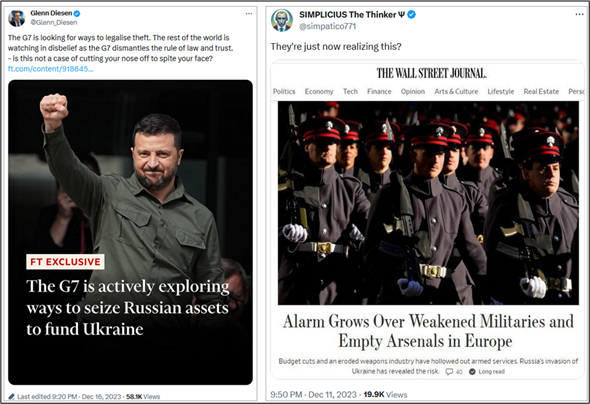
The EU as a “civil servant” of military block NATO
On the other hand, Stoltenberg and the current EU Commission, led by Ursula von der Leyen, seem to totally forget the catastrophic debacle of the Afghanistan mission and the humiliating escape from Kabul airport, which was a shameful example of the inability of the NATO and its civil servant EU.
The EU elite continues to insist on creating the “European identity” but its meaning and content has up until now passed unnoticed and failed to force the public opinion of different European countries into believing the old continent is united. This pretentious outlook is presented to Europeans on a daily basis but it instead serves as clear proof that those, who are pushing this idea the most aggressively, do not themselves believe in the thesis. The harder Brussels pushes the dream of a united Europe, the further it gets from the goal.
Regarding Europe’s goals in Ukraine crisis, the goals of the EU elite have been dictated by the US. The ordinary people in Europe seem to be largely unaware and indifferent, brainwashed by their Mainstream Media (MSM) to adopt any political agenda and bigotry, to be fed by MSM to them.
Since Moscow launched its invasion of Ukraine in February 2022, the EU has focused on adopting and then enforcing sanctions targeting much of the country’s economy, imports and exports.
The most shocking examples of these European distortions are European energy policy and the resulting “de-industrialization”, especially in Germany. If/when the coming winter finally wakes up European population lulled by Brussels dream fluff, into harsh reality, it will be a real shock. Europe will see forced de-industrialization as result of energy crisis.
Unfortunately, the European politicians have not realized the absurdity of this war and the backfire of European sanctions that have so much damaged the European economy and energy management itself. They have failed from seeing they are playing into Washington’s interests. These EU leaders decided to buy more expensive gas from the US, contributing to hyperinflation.
While the year 2023 turning into 2024, it is getting clearer day by day that Russia is winning the war in Ukraine. If/when this is the case, what will take place in the EU.
Firstly, it is necessary to recall that the whole political elite of the EU, led by President of EU Commission Ursula von der Leyen, and the whole Brussels apparatus has pledged their 100% commitment to support Ukraine and obstruct Russia’s victory at “any” cost.
This absolute constraint given, one can just imagine those fundamental changes taking place in the top political and administrative positions inside the EU, if they have to admit publicly “betting on a wrong horse”. Similar fundamental changes will take place also in the structures and membership of the block. Disintegration process of the EU will begin soon after such a political bomb explodes.
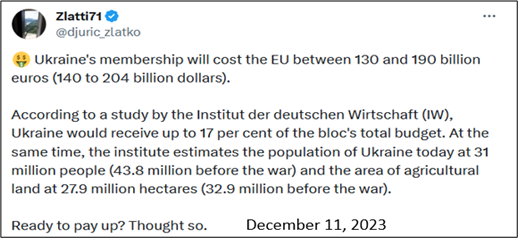
Nordic cases: Sweden and Finland, great hurry to join NATO, unique peace opportunity lost
Case Sweden
Sweden is the Nordic Kingdom, which has an interesting history. The Swedish Empire was the period in Swedish history spanning much of the 17th and early 18th centuries during which Sweden became a European great power that exercised territorial control over much of the Baltic region.
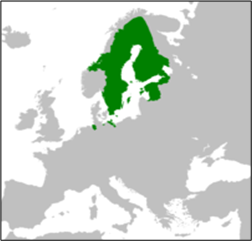
The beginning of the period is usually taken as the reign of Gustav II Adolf, who ascended the throne in 1611, and its end as the loss of territories in 1721 following the Great Northern War. Sweden was a great power about 110 years in Europe and that time Finland was an integral part of the Nordic great power.
Sweden has a long tradition, history and heritage of being neutral, non-align country, who has maintained good relations to all directions, kept neutral and well-balanced position during international crisis and managed to proceed that way in all world wars (WWI and WWII). Based on this positioning, Sweden has created top level industrial and commercial base to carry on foreign trade, large scale and volume export and import worldwide. Swedish diplomatic and peace services have been very respected both bilaterally and multilaterally around the world.
Now, if ever, Sweden had the opportunity of all time to rise again as a great power, this time as a Great Power of Peace.
IF not joining the military block NATO but keeping its neutrality and non-alignment, its historical legacy of acting as a peace broker and focusing on diplomacy, peace brokering and offering good services of peacemaking worldwide. Sweden could mobilize its whole diplomatic apparatus, universities and peace research organizations (like SIPRI) to promote peace efforts in Ukraine and elsewhere.
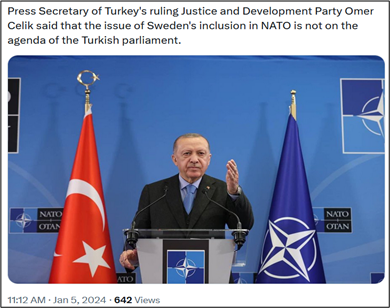
o
There is still a vanishingly small chance of this: Swedish government should make a decision to organize a binding public referendum on both NATO and DCA agreements, before ratifying them. This may open the last chance to Sweden to become a Great Power of Peace.
Case Finland – hopeless case
Finland completely lost its ability to think coherently and peacefully, no more basing its foreign policy on tried and tested principles such as neutrality and non-alignment. This change has taken place during last six years, particularly by incumbent President Sauli Niinistö, ex-PM Sanna Marin and her government and the current PM Petteri Orpo and his government.
In a great hurry, Finland rushed to NATO without any referendums and started a heavy military arming. None in Finland, neither President nor government or parliament, put any interest in any peace efforts in Europe. All parties saw only military block solution and even the mainstream media has also been harnessed to defend military-alignment to NATO. Publicly, no party is interested in peace solutions, nobody even talks about peace. Right now, all the presidential candidates unanimously swear by the name of NATO and DCA.
Today, intransigent anti-Russian policy is the name of the domestic Finnish political game. One-sided, blind admiration of American military power, without realizing the fatal dangers Finland will face due to US worldwide military power policy, is quite shocking.
Interesting articles about this topic are available e.g. in Politico, the latest is
“Moscow warns Finland will ‘suffer,’ in latest round of saber rattling”, December 28, 2023.
Some interesting tweets, important to see and read:
https://twitter.com/vicktop55/status/1736696540373160308
https://twitter.com/ricwe123/status/1737050524115964151
https://twitter.com/RebeccaYChan/status/1737039046332022944
https://um.fi/q-a-about-the-dca
https://twitter.com/ricwe123/status/1737409376778936646
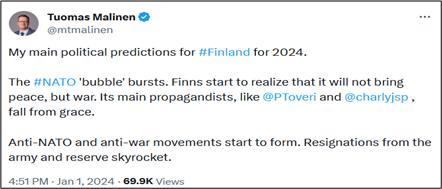
Epilogue
New World Order in the making. The ongoing military conflict in Ukraine is a watershed event of immense historical significance. It marks a break from the past and the beginning of a new geopolitical reality. The military conflict in Ukraine is not about a narrow conflict between Ukraine and Russia. It is but the outward sign of a bigger confrontation between, on the one hand, the US-led Western order and, on the other, nations like Russia, China and others who refuse to accept a subordinate role.
Breaking the vicious circle. Breaking the current dangerous vicious circle seems to be very, very difficult, nobody is willing to lose the face. The climax is approaching quickly and suddenly, even by casual accident. The final phase will be sooner or later, the nuclear Armageddon or WWIII, waged with nuclear arms.
Now, more than ever, would be needed Sweden’s diplomatic skills and services! Sweden seems to be the last hope for peace in Europe. When Sweden officially ratifies the NATO agreement and DCA agreement with the US “the last European chance is closed”. Europe will resume its desperate vassalage of Pentagon’s war machine and is walking towards its inevitable deadly destiny.
w
eat Power of Peace.


